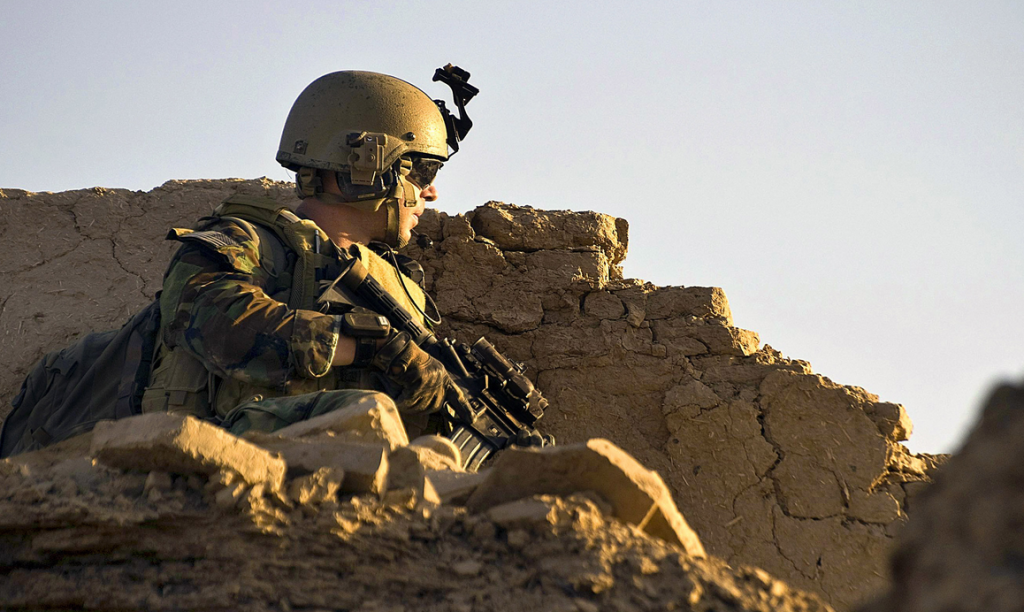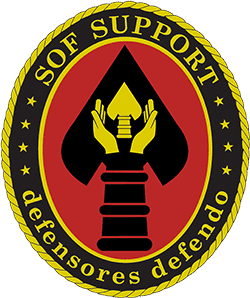The Difference Between “Special Operations” and “Special Forces”
July 6, 2023 by Marty Skovlund, Jr.
Possibly one of the most pervasive yet irritating missteps that the media and public in general make about the military is the use of the terms ‘Special Operations Forces’ (SOF) and ‘Special Forces’ (SF) interchangeably. In a day and age where special operations units have a growing presence in the media due to the increase of their importance in the asymmetric, non-conventional combat environment that our country has found ourselves in, the mistake has become all too common in headlines on news channels as well as newspapers and magazines. Consider this article a primer for anyone in the media that even remotely cares about their journalistic accuracy, as well as the curious citizen.
Special Operations, sometimes referred more accurately to as Special Operations Forces (SOF), include any unit that falls under the United States Special Operations Command (SOCOM). Naval Special Warfare, Air Force Special Operations Command, Army Special Operations Command, and Marine Special Operations Command are all included under this umbrella. I won’t go further down the ladder and list every unit under those commands, but they cover everything from the 528th Sustainment Brigade and Civil Affairs to the SEAL Teams and Ranger Regiment.
The shadowy Joint Special Operations Command also falls under SOCOM as a sub-unified command but often reports directly to higher authorities due to their unique and often sensitive missions. Who is not covered by the term Special Operations? Anyone who does not fall under the SOCOM umbrella. For example, although Force Recon companies in the Marine Corps are highly trained and undergo a selection process similar to many SOF units, they are not considered Special Operations as they belong to the Marine Corps, not SOCOM.
Now, what about the term “Special Forces”? Special Forces is not a generic term in the U.S. military and refers to a very specific unit. The 1st Special Forces Regiment falls under the command of the Army Special Operations Command (mentioned above) and includes the 1st, 3rd, 5th, 7th, 10th, 19th, and 20th Special Forces Groups.
They are most often referred to by their distinctive headgear, the Green Beret, or simply as “SF.” The Army’s Special Forces are capable of a wide variety of missions but were designed to be the premier experts on unconventional warfare and foreign internal defense.
As an example of a classic unconventional warfare mission that happened in recent history, after the terror attacks of 9/11 small elements of the 5th Special Forces Group embedded with indigenous fighters from Afghanistan’s Northern Alliance and led them into battle. Within a matter of weeks, they had effectively neutralized the Taliban threat – accomplished not with brigades and divisions of soldiers, but with only a couple dozen Special Forces soldiers. This is the capability that the 1st Special Forces Regiment brings to the table and makes them very unique in the larger SOCOM picture.
To summarize, Special Operations Forces (SOF) is a generic term that you can use to refer to any special operations unit. Special Forces is the title of a very specific unit and is not a generic term for other units. If you don’t know what unit did something, refer to them as SOF or Special Operations. If you know for a fact that it was a unit from one of the seven Special Forces Groups, then refer to them as Special Forces. Simple enough… Right?
The military is always looking for ways to improve warrior morale and build unit pride, and while there are a variety of ways to do this, it seems that an increasingly common method is to use morale patches. It is an interesting symbol of morale or team spirit, which is the ability of a group to believe in the goals or instincts that bind them together despite adversity. Custom patches are increasingly present in our lives today, and are an important part of our military history, with close ties to our military and law enforcement personnel. In the military, however, morale patches are typically found on equipment, clothing, and patch panels.
This first appeared in The Havok Journal on May 30, 2015.
Marty is a veteran of the 1st Ranger Battalion and Syracuse Recruiting Battalion, a former small business owner, and the author of Violence of Action: The Untold Stories of the 75th Ranger Regiment in the War on Terror (Blackside Publishing) as well as Ranger Knowledge: The Complete Study Guide (St. Martins Press). He is also the executive producer of the award-winning documentary Nomadic Veterans and the award-winning short-narrative Prisoner of War. He is currently working on his third book as well as pursuing a career in film and television.

As the Voice of the Veteran Community, The Havok Journal seeks to publish a variety of perspectives on a number of sensitive subjects. Unless specifically noted otherwise, nothing we publish is an official point of view of The Havok Journal or any part of the U.S. government.
